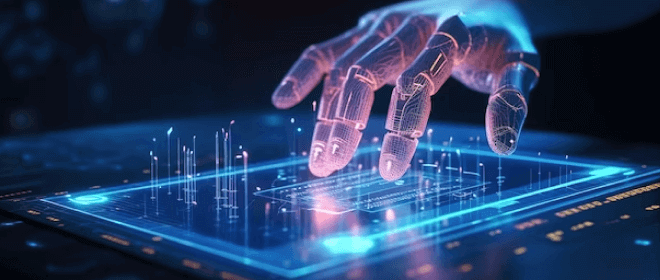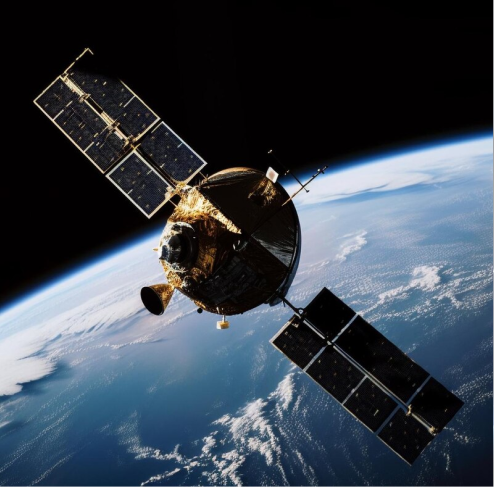
Perceptual Evolution: From Perceptual Intelligence to Cognitive Intelligence
Perceptual intelligence involves the use of sensor technology and AI algorithms to perceive and understand the external environment. This technology allows systems to collect, analyze, and respond to environmental information actively. Key aspects of perceptual intelligence include computer vision, speech recognition, and natural language processing. These technologies are integral to smart devices and systems, enabling them to adapt to various environments and perform more intelligent and automated functions. For example, voice assistants and facial recognition systems rely on perceptual intelligence to interact in human-like ways. In autonomous vehicles, perceptual intelligence helps identify roads, obstacles, and traffic signals, facilitating autonomous navigation and obstacle avoidance. Perceptual intelligence enables communication and interaction in ways that are intuitive and familiar to humans.
Cognitive intelligence represents a higher level of AI capability. It encompasses understanding, reasoning, planning, decision-making, and problem-solving. Unlike perceptual intelligence, cognitive intelligence requires machines to exhibit humanoid-like intelligence, comprehend environmental contexts, and possess a degree of autonomous thinking and creativity.
The evolution from perceptual intelligence to cognitive intelligence can be divided into three stages:
Stage 1: Data-Driven Perceptual Intelligence. In this initial stage, AI systems are trained using large volumes of labeled data to develop capabilities like computer vision and speech recognition. This approach emulates the neural networks of the human brain through deep learning models such as Convolutional Neural Networks (CNNs) and Recurrent Neural Networks (RNNs). While successful in achieving perceptual functions comparable to human abilities, this stage is limited by its dependence on extensive labeled data, which constrains scalability and generalization.
Stage 2: Knowledge Representation and Reasoning. The second stage focuses on equipping machines with the ability to represent and reason with knowledge. Two primary methods are explored: symbolism and connectionism. Symbolism involves the explicit representation of knowledge, enabling logical reasoning, while connectionism uses neural network connections to represent knowledge implicitly . This stage establishes the foundational elements necessary for advancing toward cognitive intelligence.
Stage 3: Autonomous Learning and Innovation. How can artificial intelligence, once equipped with knowledge representation and reasoning capabilities, develop the ability for independent learning and innovation? This is the challenge that must be addressed in the third stage. By continuously adapting to and learning from its environment, artificial intelligence will progressively develop independent cognitive abilities and innovative skills, ultimately offering transformative value across diverse fields.
Data Interconnection: The Foundation for Unleashing Artificial Intelligence
Data interconnection involves the effective sharing and integration of data across different sources and systems. It encompasses not just data collection, but also its transmission, processing, and analysis. By bridging the virtual and real worlds, data interconnection paves the way for a new era of intelligence.
To address the growing need for decentralized data storage and sharing, technologies such as distributed ledgers and blockchain offer solutions. These technologies enable data to be stored, shared, and synchronized across multiple locations and participants, enhancing data management and accessibility.
In the realm of data standardization and open source, enhancing data interconnectivity will increasingly involve adopting open-source and standardized solutions, thereby reducing dependence on specific suppliers.
As for data security and privacy, various technologies have emerged to safeguard personal privacy and sensitive corporate information. Technologies such as data encryption, anonymization, and minimization (which involves collecting only the data necessary for specific services) play a key role in safeguarding privacy and ensuring data security.
As enterprises and organizations increasingly rely on real-time data for decision-making, they require technologies that ensure high-speed and uninterrupted data flow.
As data fragmentation increases, standardization and normalization are essential for ensuring that data from various sources and formats can be effectively integrated and utilized. The need for robust data governance frameworks and interoperability standards will continue to rise to address these challenges.
The advancement of cloud computing and edge computing is making data interconnection faster and more intelligent. Cloud computing offers centralized, large-scale data processing capabilities, while edge computing enables rapid, localized processing close to data sources. Together, these technologies enhance the flexibility and efficiency of data interconnection. In the future, data interconnection will become more intelligent, secure, and efficient, further enhancing the capabilities of artificial intelligence and embedding it more seamlessly into every aspect of daily life.
The Interrelationship Between Perceptual Evolution and Data Interconnection
Data interconnection has significantly driven the perceptual evolution of artificial intelligence. As the Internet of Things (IoT) expands, an increasing number of devices are interconnected, generating vast amounts of data. This data, collected through various sensors, is processed and analyzed via deep learning, allowing artificial intelligence to more accurately simulate human perception.
Conversely, the advancement in AI perception has energized data interconnection. Enhanced capabilities in visual and auditory recognition enable AI to better filter and categorize large datasets, facilitating more efficient data exchange and utilization. These advancements also drive the development of new standards and protocols to meet the growing demand for seamless data exchange, further optimizing data interconnection.
Ultimately, the evolution of AI perception and data interconnection are mutually reinforcing. Improved AI perception enhances the ability to leverage and interpret interconnected data, enabling more sophisticated responses to complex scenarios. In turn, advanced data interconnection technologies provide AI with high-quality, accessible data, boosting its perceptual capabilities. Achieving advanced perceptual capabilities in artificial intelligence—such as complex visual, auditory, and verbal understanding—requires substantial input and processing data. This reciprocal relationship highlights that the advancement of data interconnection and AI perception will be interdependent, each driving the other to unlock the full potential of a future intelligent world.
-
Merak 2.0 MaaS Multi-Modal Large Model Operation PlatformiSoftStone's Merak 2.0 MaaS Multi-Modal Large Model Operation Platform is an enterprise-level intelligent assistant solution applicable to various fields, including enterprise customer service, recruitment, legal affairs, operations, design, engineering research and development, UML diagram drawing, and data analysis. It provides comprehensive and efficient support for various tasks.
-
AISE ProductsAISE is a product developed by iSoftStone to enhance efficiency in the enterprise software engineering field using AI big models. The product currently focuses on core capabilities such as code autocompletion, code assistant tools, and document knowledge management.
-
AI-End Cloud Integration SolutioniSoftStone's AI-End Cloud Integration Solution, combined with Huawei's 2021 Intelligent Process Robot solution and other related technologies, is a software and hardware integrated solution designed for addressing the breakpoints and bottlenecks in repetitive and rule-based tasks and business processes within enterprises. At present, AI-End Cloud collaborative services have been applied to more than 100 intelligent automation scenarios, covering various fields including enterprise, finance, government affairs, internet, education, automotive, banking, insurance, and securities.










